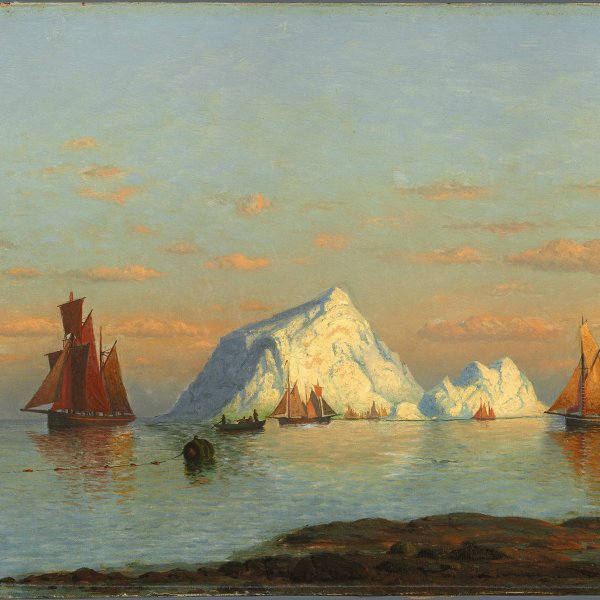William Bradford
William Bradford was born of Quaker parents on 30 April 1823 in Fairhaven, located across the harbour from the whaling port of New Bedford, Massachusetts. As a youth Bradford was a clerk in his father's dry goods store, but following an early inclination to drawing, spent much of his time making sketches, including repetitive copying from an English drawing book. Bradford started his own wholesale clothing establishment outfitting sailors around 1852, but as he admitted, he devoted too much of his time in painting to succeed. He began to earn an income by painting ships. In 1854 Bradford visited the temperamental Dutch marine painter, Albert van Beest, who had arrived in New York in the 1850s with the Portuguese artist, Texeiros de Mattos. He invited him to Fairhaven, and in return for room, board and studio space, Van Beest instructed Bradford in painting. The two worked together for several years often collaborating on a single canvas. On 8 August 1856, Bradford, Van Beest, as well as the luminist painter, Fitz Hugh Lane, were together at New Bedford to watch the New York Yacht Club Regatta, which took place in Buzzards Bay. Bradford must also have known Robert Swain Gifford, who at the time was also a pupil under Van Beest. In the late 1850s Bradford moved to Boston, spending his summers along the shores of Swampscott and Nahant.
Inspired to travel to Labrador after reading Elisha Kent Kane's 1856 book on his Arctic explorations, as well as perhaps by Frederic Church's voyage to Labrador in 1859, Bradford sailed for the Arctic regions in April 1861, shortly before the Civil War broke out, in a 120-ton schooner. His trip was acknowledged by his Quaker friend, the poet John Greenleaf Whittier, in his poem "Amy Wentworth, " which was dedicated "To W. B." Bradford soon became known for his paintings and photographs of the Arctic, as he made seven additional journeys to Labrador. In 1869, Bradford, along with the explorer Dr. Isaac I. Hayes, set sail for Greenland in a 375-ton whaling steamer, the Panther, in a trip partially financed by LeGrand Lockwood. From the trip came a commission from Queen Victoria for his painting, The Panther off the Coast of Greenland under the Midnight Sun (1873, London, The Royal Collections), invitations to speak before the Royal Institution and the Royal Geographical Society of London; and the 1873 publication under the patronage of Queen Victoria and others of his book, The Arctic Regions.
After returning to America, Bradford was elected an associate of the National Academy of Design in 1874. He travelled extensively in the United States, giving illustrated lectures. Bradford maintained a studio in San Francisco for seven years, painting the Sierra Nevada mountains and Yosemite. The last years of his life he lived in New York City at the Tenth Street Studio Building during the winter, while spending the summers at the haunts of his childhood in a studio overlooking a portion of Buzzards Bay. Bradford died on 25 April 1892 in New York City; his funeral was held in Fairhaven.
Kenneth W. Maddox

